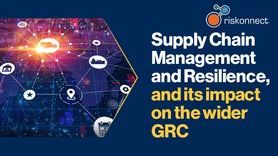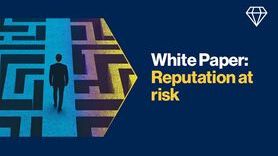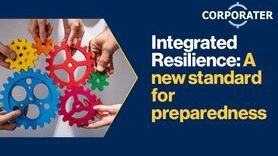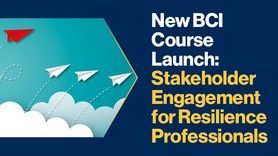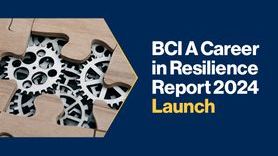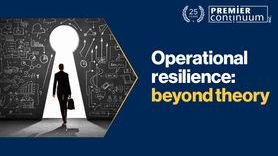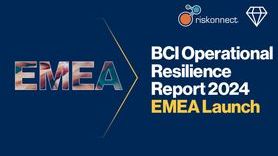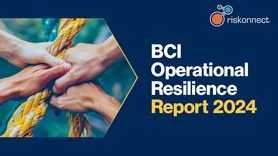The Great Resignation Isn’t Slowing Down: Here are the business continuity management strategies to prevent associated disruptions

The latest twist in the Great Resignation
When many pandemic-related measures came to an end in early 2021, markets saw a surge in labor-force mobility. At the time, economists speculated that the Great Resignation, sometimes known as the Great Reshuffle, would be temporary as labor markets adjusted to the new normal.
It’s been anything but. Labor markets remain incredibly volatile.
In 2021, for instance, 48 million people quit their jobs in the U.S. – easily breaking records for annual quits.[i] Things haven’t slowed down since.
March 2022 data came out, showing that 4.5 million workers quit their jobs in a single month – at that rate, last year’s all-time quits record will be toppled easily.
The Great Resignation goes global
And though the U.S. might be the locus of the phenomenon, it’s not the only country affected. Resignations have jumped in the U.K., Australia, and France, as well, according to CNN.[ii] Last year, for instance, France saw third-quarter resignations break records dating back to 2007.
The Australian Government, for its part, announced that 1 million workers began new roles in the three months to November 2021 – a rate of job switching almost ten per cent higher than the pre-pandemic average.
In the U.K., the rate of employed people aged 16 to 64 moving from job to job was at an all-time high between October to December 2021.
Add to that, LinkedIn data from January 2022 showed a notable increase in the number of workers switching industries in Spain, the Netherlands, and Italy compared to early 2021.
Why you need a plan to tackle the Great Resignation
If the Great Resignation is bringing new blood to new jobs, what’s the issue, exactly? Well, in the same wave that’s ushering new people in, an organization’s best people might be shuffling out.
That’s what the data is indicating.
According to Willis Towers Watson’s 2022 Global Benefits Attitudes survey, nearly half of all current employees (44 per cent) are now job seekers – a third of those are actively job hunting.
The reasons why are illuminating.
Most significantly, the pandemic created a backlog of people looking to leave their job but who held on until the worst seemed to be over; others left the labor market altogether to care for children or elderly relatives when disruptions altered established forms of care.
Higher wages, of course, are a major factor, especially amidst an inflationary spiral[iii].
But there’s a significant number of active job seekers who intend to leave their current posts even without a pay raise.
Why’s that important?
Workers who got used to work from home during earlier phases of the pandemic are balking at employers looking to return to the traditional office.
Many job seekers want more remote work options than current employers are allowing.
How many?
Well, over a quarter of survey respondents (26 per cent) are always or mostly working from home.[iv] Another 15 per cent have an equal split between home and the office. Much higher shares, though (36 and 22 per cent, respectively), would prefer remote work.
It’s not hard to see why. Reasons cited as the three biggest benefits workers see with remote work include:
- Less time commuting
- Lower costs associated with going to the office
- Better management of household commitments
The demonstrated desire for flexibility intersects with the rise in burnout. In professions like nursing, for example, burnout is at epidemic levels.
Published in late 2021, a survey of more than 9,500 nurses conducted by the U.K.'s Royal College of Nursing found that 57 per cent of respondents were thinking about leaving their jobs or actively planning to leave. The top reasons given – feeling undervalued and exhausted.
Nor is the C-Suite immune. NBC News reports that executives, “after trying to maintain work-life balance while juggling pandemic-related challenges,” are leaving their posts at increased rates.[v]
The question now becomes, what can employers do to retain top talent, avoid availability issues and increased trainings costs?
Strategies to mitigate the business continuity and organizational resilience impacts of the Great Resignation
It’s heartening that employers are finally cottoning on to the fact that losing top talent in critical business areas imposes steep operating costs – costs which can imperil the very viability of their organizations.
That’s why the loss of important personnel is considered a staffing or personnel crisis – on par with data breaches, natural disasters, acts of workplace violence, and other critical event types.
What can be done to mitigate the availability risk? To the extent that the issue involves workers feeling burnt out, wellbeing management strategies and accompanying digital employee health and wellbeing management platforms might be an appropriate response to the Great Resignation.
Here, the relevant treatment for the specific wellbeing-related continuity risk includes the following:
- Surveying personnel using wellbeing surveys
- Enabling personnel to self-serve content to improve their wellbeing (more generally)
- Creating wellbeing activities which personnel can opt in to attend
What if staffers admit in surveys that it is persistent remote work that’s causing feelings of isolation and loneliness? Those staffers might be in danger of leaving, as well, resulting in potential losses of productivity in a critical business area.
For that use case, employers should consider:
- Enabling personnel to schedule regular check-ins when working remotely
- Enabling personnel to self-serve relevant content to improve their wellbeing
- Creating relevant wellbeing activities which personnel can opt in to attend
Furthermore, a flurry of staff exits might have been triggered by a significant wellbeing event, of which there’ve been many. And even if staffers haven’t left yet, the company might still be suffering from increased worker disengagement, which is likely to result in churn – again, in a potentially critical business area.
For that use case, employers should consider:
- Conducting welfare checks (at scale), enabling personnel to respond via email, SMS, or voice, so that you can triage your response to events
- Survey personnel using wellbeing surveys
- Enable personnel to self-serve content to improve their wellbeing.
The role of digital employee health and wellbeing management solutions
Employers, though, shouldn’t belabor implementing wellbeing programs to mitigate the business continuity effects of the Great Resignation. To this end, digital wellbeing management technologies can help.
These technologies enable businesses to respond to mental health and wellbeing events, implement and track proactive initiatives to support their personnel, and understand the opportunities for mental health and wellbeing improvement better.
What other capabilities should employers consider? The following capabilities will come in handy as employees increasingly weigh their options in this volatile labor market:
- Gain situational awareness of current events impacting on personnel through live weather, Twitter, and pandemic feeds
- Broadcast communications to distributed personnel in seconds using email, SMS, or voice
- Conduct welfare checks at scale enabling personnel to respond via email, SMS, or voice
- Triage response to events
- Push surveys to personnel to understand how they are coping before, during, and after events
- Launch initiatives with templates that take the heavy lifting out of creation and implementation
- Customize initiatives based on current events or unique organizational requirements
- Schedule periodic working from home ergonomic assessments for distributed staff
- Enable personnel to request mental health and wellbeing support
- Direct personnel to support programs and best-practice content
- Securely store personnel information in a single solution or import from your HR Software
Finally, employers might think recessionary storm clouds will take care of the Great Resignation for them. But until then, high numbers of quits pose significant disruption risk, especially if it’s top talent in critical business areas that goes.
How to avoid paying the costs? We at Noggin suggest implementing best-practice, context-specific wellbeing management solutions, with the help of integrated wellbeing management technology.
Such solutions help you maintain a comprehensive view of the wellbeing of your workers, their needs, and the wellbeing initiatives you conduct, with out-of-the-box resources that will give your staffers a sense that you have their best interest at heart.
[i] Greg Iacurci, CNBC: The Great Resignation continues, as 44% oof workers look for a new job. Available at https://www.cnbc.com/2022/03/22/great-resignation-continues-as-44percent-of-workers-seek-a-new-job.html.
[ii] Julia Horowitz, CNN: The Great Resignation is taking root around the world. Available at https://www.cnn.com/2022/03/30/economy/great-resignation-uk-australia-europe/index.html.
[iii] Eric Rosenbaum, CNBC: Why this is a critical moment for American workers to push for wage gains. Available at https://www.cnbc.com/2022/05/27/two-thirds-of-american-workers-say-pay-not-keeping-up-with-inflation.html#:~:text=Two%2Dthirds%20of%20American%20workers,new%20CNBC%7CMomentive%20Workforce%20Survey.
[iv] Greg Iacurci, CNBC: The Great Resignation continues, as 44% oof workers look for a new job. Available at https://www.cnbc.com/2022/03/22/great-resignation-continues-as-44percent-of-workers-seek-a-new-job.html.
[v] Daily Briefing, Advisory Booard: The 'Great Resignation' could be coming for your C-suite. Available at https://www.advisory.com/daily-briefing/2022/04/01/ceo-departure#:~:text=Throughout%20the%20%22Great%20Resignation%2C%22,amid%20the%20Covid%2D19%20pandemic.


